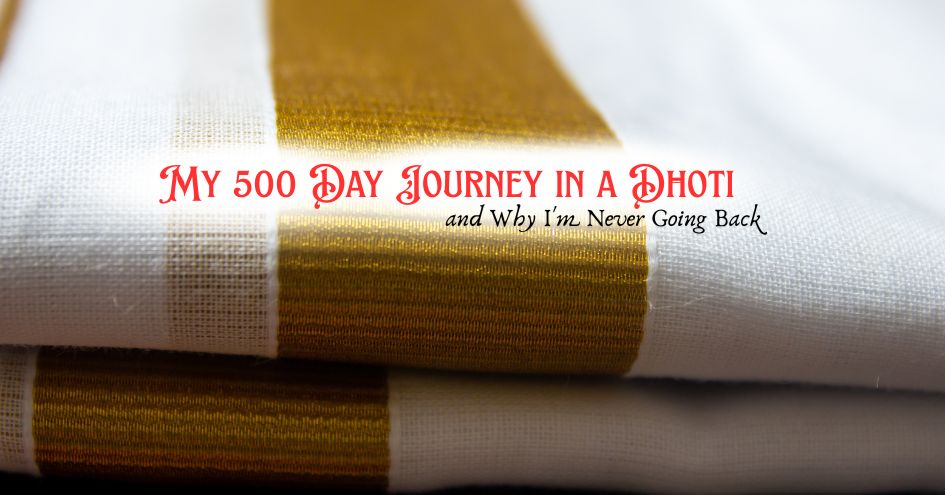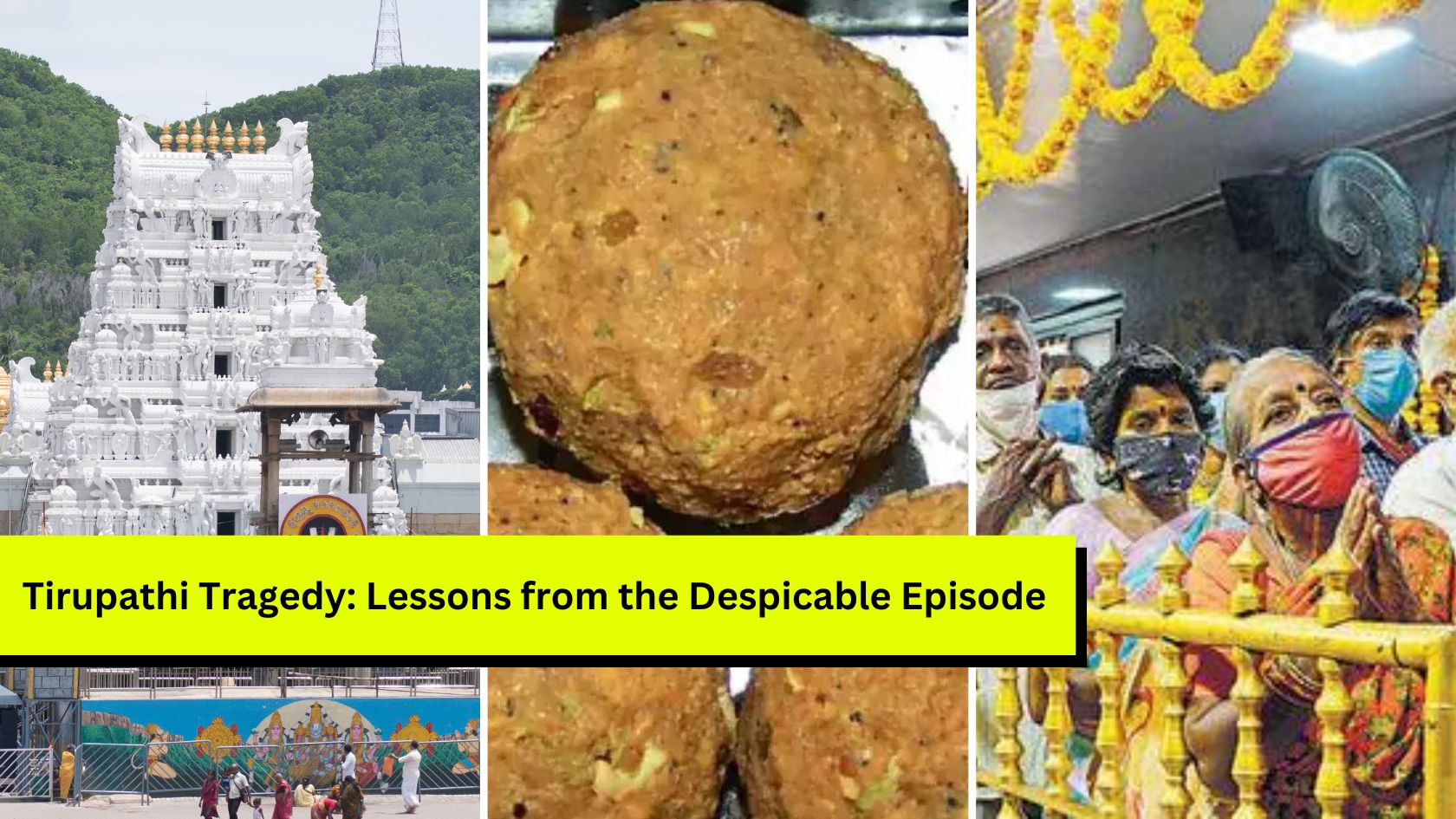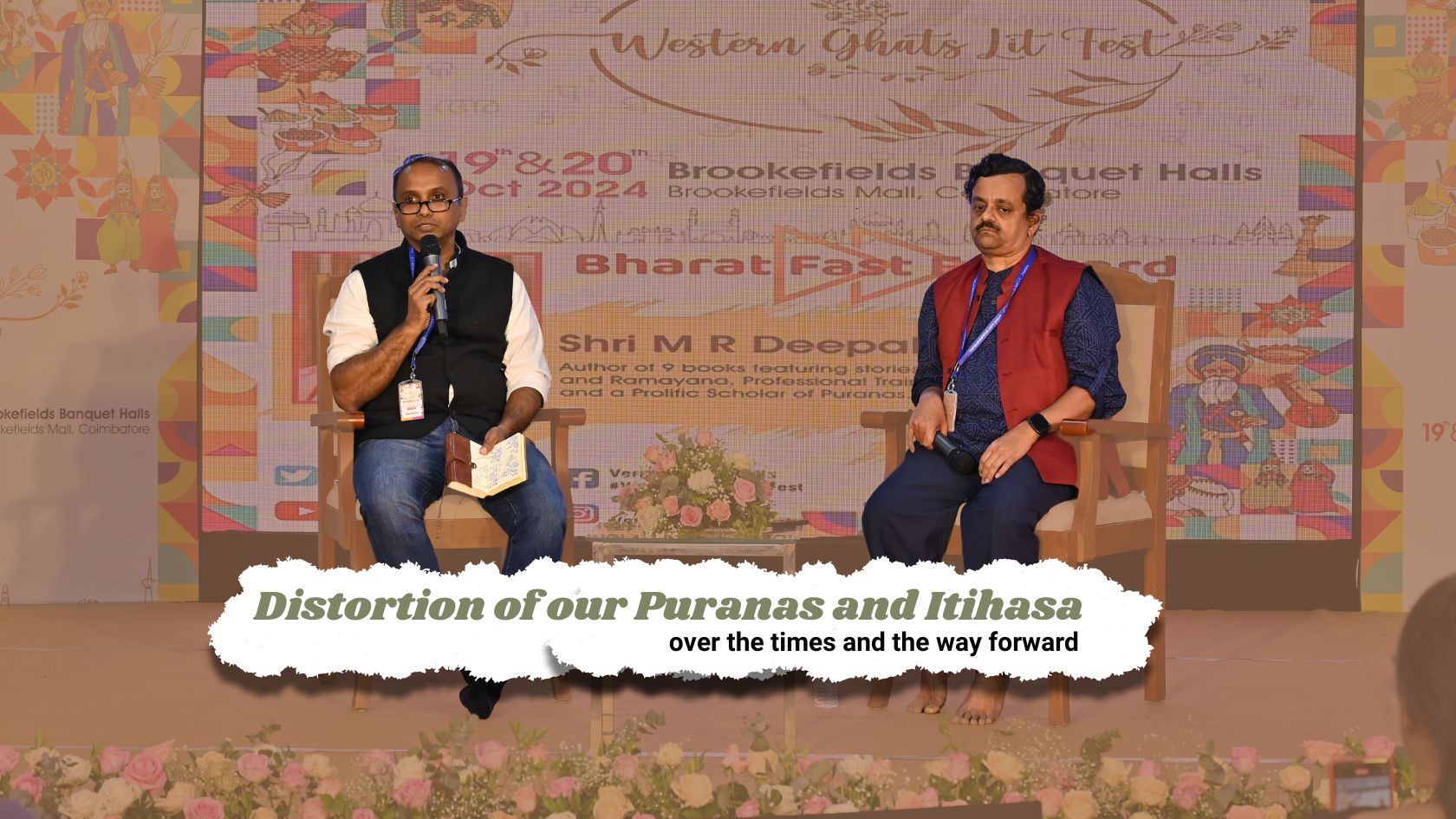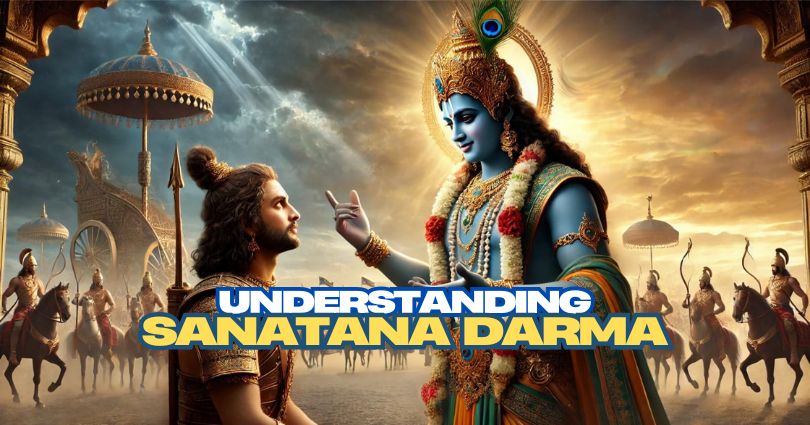
It all began with a question. I was eight years old, standing before the idol of Lord Muruga in the hallowed Marudhamalai temple. My small hands were pressed together, a clumsy imitation of my mother’s prayerful stance. Sweat trickled down my back—was it from the oppressive humidity of the karuvarai (sanctum sanctorum), thick with the scent of camphor and incense, or a primal fear of being swallowed by the devout crowd? While my body copied the outward motions of devotion from my mom, my eyes remained wide open. I was captivated, pondering the temple's grandeur and the sheer force of faith I saw on every face. I couldn’t completely fathom devotion at that point in time, but I understood they were all sincere in their persuit. And as I stared at the stone deity, a simple, persistent question took root in my young mind: Is that statue really God? Is it alive? It was a query I decided to save for my mother.
Later, a fellow devotee shared handfuls of warm avul pori, a simple, sweet prasadham (a blessed offering). We found a quiet spot in the shade of a large peepal tree, settling down behind a shrine to PanchaMukha Vinayagar. With gentle hands, my mother rolled the puffed rice into small, sticky balls for my akka and me.
As the sweet taste of the offering dissolved on my tongue, the peace of the moment gave me the courage to finally ask my question. "Amma," I began, "the statue inside… is it really alive?"
A knowing smile graced her lips. "Anything we care for with such devotion, kanna, eventually comes to life," she explained softly. "For centuries, we have performed abishekams—sacred anointments—for that idol, six times every single day. Through this constant love and ritual, the stone is transformed. It becomes a murti: a living embodiment of the divine that hears our prayers."
A new thought immediately sparked in my mind. "So... does everything around us have a life?"
"Yes," she said, her voice full of simple, profound certainty. "If you take good care of it."
That simple lesson—that care brings things to life—fundamentally changed the way I saw the world. I began searching for the spirit hidden in everything. My childhood pockets became a treasure trove of found objects: smooth stones, shiny pieces of plastic from tape rolls, magnets salvaged from broken speakers. I would arrange them, keep them close, and whisper stories to them, convinced that my attention was a form of care that nurtured their existence.
As I grew up, this childhood game of finding life in the inanimate evolved. The focus of my attention simply broadened. My fascination with a single stone expanded into a deep, abiding passion for ancient temples, the intricate details of their idols, and the rich living bundle of our heritage. I began to understand that these magnificent structures were just like my childhood stones, only on a grander scale—objects made alive and sacred by centuries of devotion.
So, where does the dhoti enter this story? My abstract passion for heritage became a concrete, daily practice because of a single sentence I heard in 2023.
We, at INTACH, were hosting a workshop on traditional Indian fabrics for school teachers at Prakriya International School here in Coimbatore. The speaker, a cultural expert named Dr. Sivaramakrishnan, shared an insight that struck me with the force of a revelation. "The Saree and the Dhoti are unique," he explained. "They are complete garments that have never been pierced by a needle. This is why, traditionally, the ends are knotted, not stitched."
His words electrified me. In that instant, my mother's lesson from the temple grounds echoed with newfound clarity. A thrilling thought took hold: If our clothes have life, then of course we ought not to hurt them with needles. Was this what our ancestors believed? Did they see their garments as living things, just as I did?
Suddenly, the unstitched dhoti was no longer just a piece of traditional clothing. It was a profound expression of the very philosophy I had held since I was a boy: that to care for something is to give it life.
Inspired, I began to wear the dhoti more often. At first, it was reserved for specific occasions—visits to the temple, long drives, or family functions. But with each wear, a profound realization dawned on me: the dhoti is an extraordinarily comfortable garment. I understood, on a personal level, that it wasn't just traditional; it was a piece of clothing perfectly engineered for the tropical climate of India. In a region like ours, defined by scorching heat and dense humidity, the dhoti’s airy, breathable design isn’t a mere feature; it's the very soul of its practicality.
My appreciation only deepened as I considered its design. The dhoti is a masterclass in sustainability and accessibility. It's a 'one-size-fits-all' garment in the truest sense, free from the complexities and waste of tailored sizing. Its drape and length can be adjusted with a few simple folds. Moreover, even the most exquisite, high-quality dhoti is remarkably affordable compared to a pair of branded trousers.
Comfort, climate-suitability, sustainability, and economy—all woven into a single, unstitched piece of cloth. It became overwhelmingly clear that this wasn't just clothing; it was a time-tested and brilliant solution. Our ancestors weren't just preserving culture; they were practicing ingenious design
This genius in design is most evident when you consider the dhoti's incredible adaptability—a feature born from the realities of our ancestors' lives. Imagine their world: not one of paved roads, but of working the wet earth after a monsoon shower, of wading through knee-deep streams, of feeling a sudden chill on the calves as evening set in.
For all these scenarios, the dhoti was the perfect tool. In an instant, it could be folded high, transforming from a full-length garment into functional shorts, ready for the fields or the water. Just as quickly, it could be let down again for warmth or formal bearing.
Can a pair of modern trousers do that? Can they instantly adapt to the demands of the environment? What may seem like a simple fold to the modern eye is, in truth, a piece of brilliant, practical engineering. It is a design that respects both the body and the work it must do—a concept not silly or funny, but profoundly intelligent.
All these realisations—philosophical, practical, and historical—converged into a single, clear resolution. This engineering marvel, this living piece of cloth, could no longer be just occasional attire. I knew it had to become my daily companion.
The perfect moment for this commitment arrived on a day of immense cultural significance for our nation: January 22nd, 2024. It was the day of the Ram Mandir's consecration in Ayodhya, a moment when the entire country was immersed in celebrating its heritage and reconnecting with its civilisational roots. As millions looked towards preserving the grand continuum of our culture, I found my own humble, personal way to participate.
On that historic morning, I made my pledge. What better day to begin my own journey of preservation? Not of a monument in stone, but of a tradition I could wear every day. A journey to honour and live alongside my friend: the dhoti.
It has been 561 days and, that—is the "why" of my story. The "how"—the day-to-day experiences, the joys, and the lessons learned over these 500-plus days—is a story I will be sharing very soon.
 Vigneshwaran, Senior Correspondent of TheVerandahClub.com is both a skilled digital content writer, story teller and marketer by profession, as well as an avid independent writer driven by his passion. His literary talents extend to crafting beautiful poems and captivating short stories including the Sehwag Tales series. In addition to these creative pursuits, he has also authored a book titled "Halahala," which can be found on Wattpad.
Vigneshwaran, Senior Correspondent of TheVerandahClub.com is both a skilled digital content writer, story teller and marketer by profession, as well as an avid independent writer driven by his passion. His literary talents extend to crafting beautiful poems and captivating short stories including the Sehwag Tales series. In addition to these creative pursuits, he has also authored a book titled "Halahala," which can be found on Wattpad.
PREVIOUS ARTICLE
NEXT ARTICLE

The Venkateshwara Swami Temple in Tirupati is among the holiest places in the world for Hindus. Millions of people throng the temple every year to get...

It is a sad reality that our Itihasa and Puranas have been subject to severe distortion over the years. This is not surprising considering how even th...

The holy land of Bharat follows Sanatana Dharma. The word Sanatana Dharma is a Sanskrit word meaning, “Eternal law”. It is the indestructible ultimate...